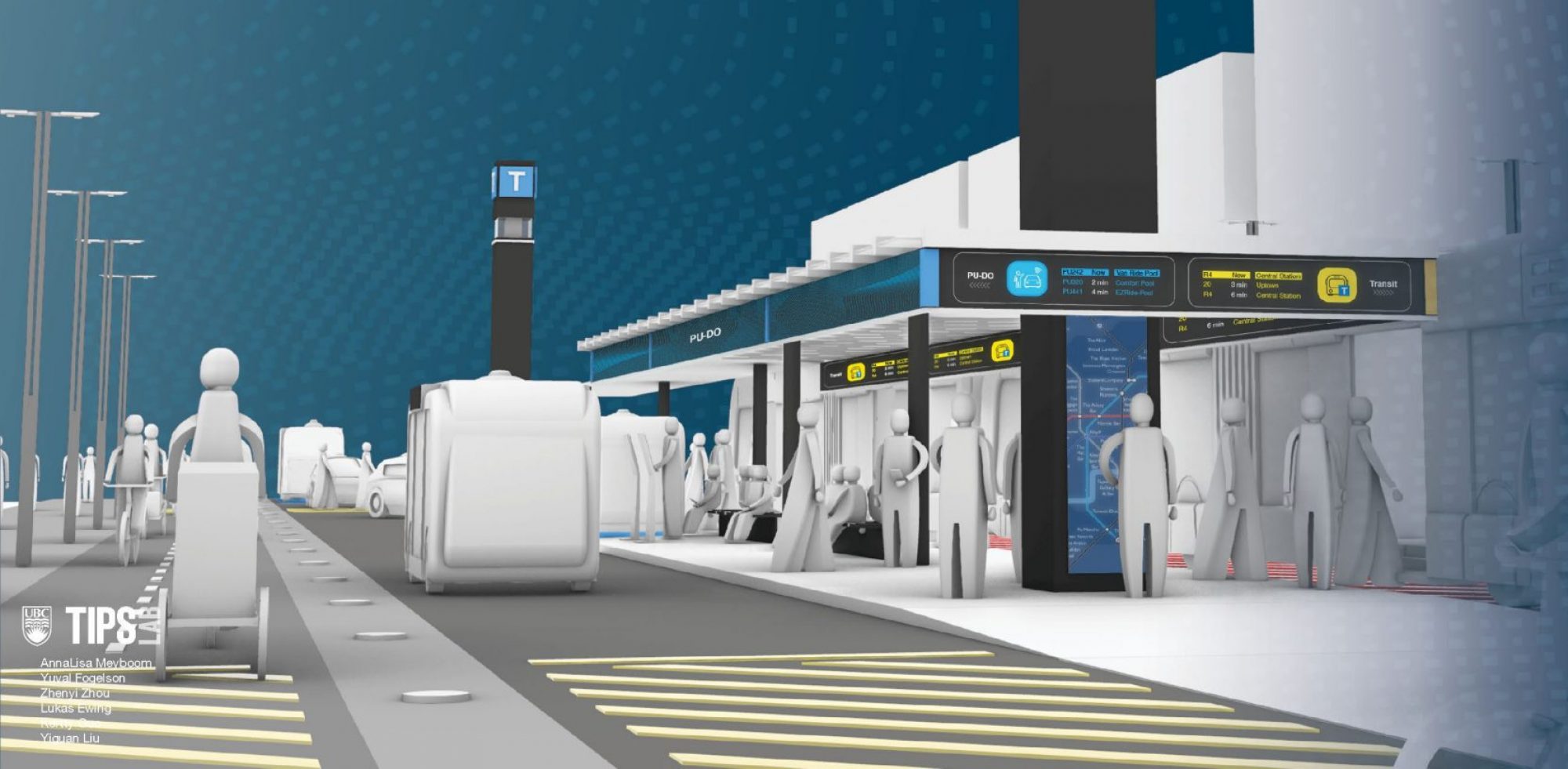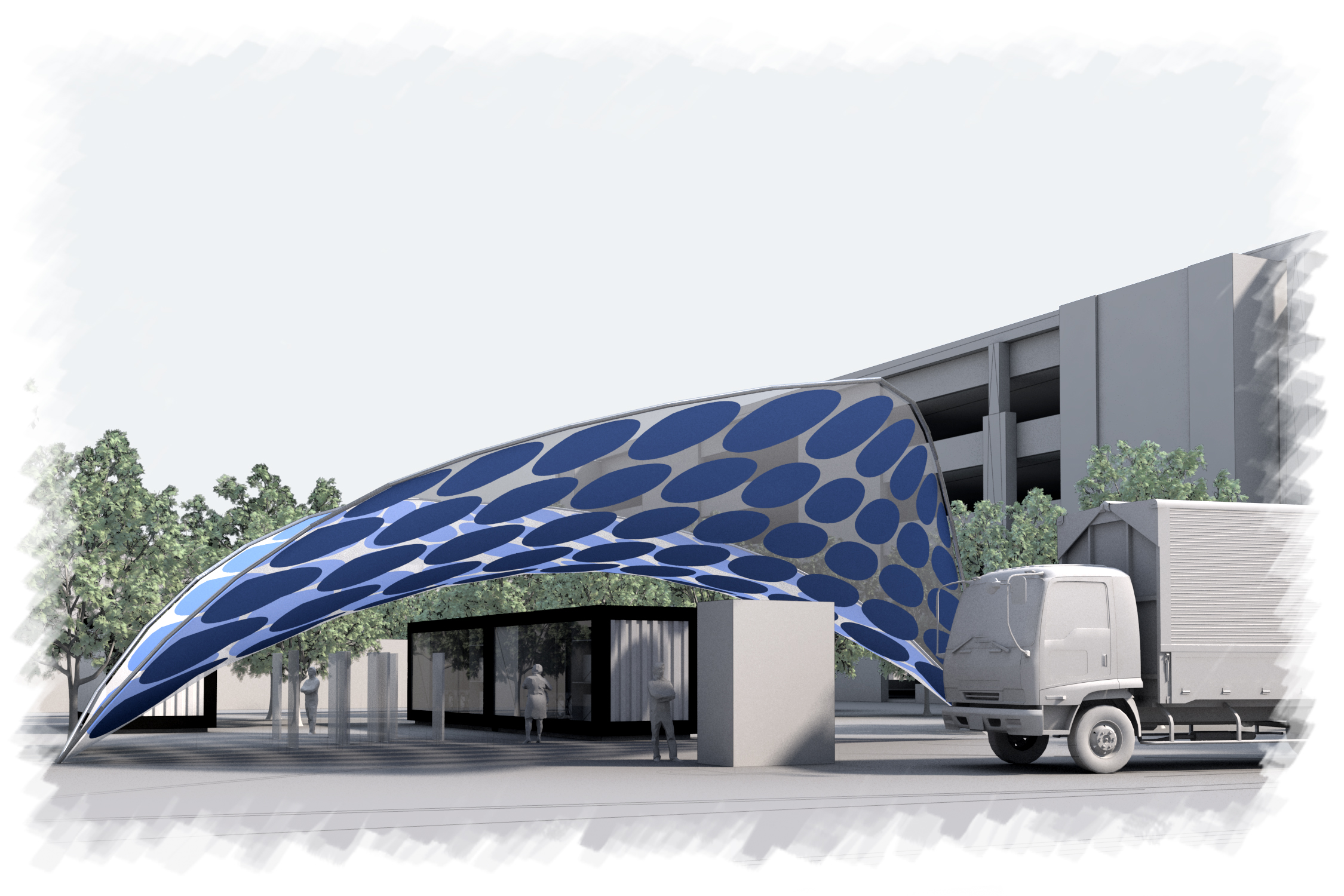The Transportation Infrastructure and Public Space Lab has been working with the Transportation Futures group for several years on the Transportation Testbed visioning. The faculty involved in this project include David Zielnicky and AnnaLisa Meyboom. Prior to this more specific project, there was a report entitled “Parkades of the Future’ prepared for UBC under the Campus as a Living Lab in 2014 which puts forward many of the ideas which will be taken forward in this and future projects. This report is downloadable on the TIPSlab website: tipslabubc.com.
The work done to date on this design involves precedent studies, technical studies of requirements, siting analysis and preliminary design options. Three design options were presented and discussed by the stakeholders in this project and the design shown here is the result.
Siting analysis is dealt with in more detail in the report provided to UBC. The site has been chosen in consultation with the various stakeholders at UBC and to minimize tree removal and with consideration of traffic safety.
In this report we only summarize design ideas and the precedents which support them. Further information can be provided on request.
FACILITY PROGRAM
The project is meant to be both a research facility for future transportation fuels as well as an educational facility to explain the facility and more widely educate the public about the research and the potentials of the technology.
The facility in its entirety will include solar panels which collect energy and convert it into fuel of two types: electricity and hydrogen. The energy can be stored at the facility by a battery or an ultracapacitor as well as converted into hydrogen for storage. The fluid flow of energy and its transmission is key to the research and the expression of the flow is part of the design intent of the station. The requirement for design is to accommodate on site:
- the hydrogen fueller,
- a space to pull up and be out of traffic,
- the electrolzing equipment (one to two containers)
- the ultracapacitor and battery (assumed one container)
- educational facilities which may vary depending on budget but could include panels, screens, and a container ‘gallery’





